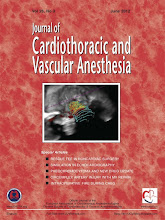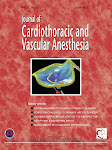Feroze Mahmood, MD
Madhav Swaminathan, MD
Section Editors
Severe Tricuspid Valve Regurgitation:
A Case for Laminar Flow
Frederick C Cobey, MD, *
Maria Fritock, MD,
†
… Frederick W. Lombard, MD,
†
…
Donald D.Glower, MD, § Madhav
Swaminathan, MD, FAHA, FASE‡
* Georgetown University, the Washington Hospital Center, Washington, DC
†Department of Anesthesiology, Mayo Clinic, Rochester, MN
§Department of Surgery, Division of Thoracic Surgery, Duke University Health System, Durham, NC
‡Department of Anesthesiology, Division of Cardiothoracic, Anesthesiology and Critical Care Medicine, Duke University Health System, Durham, NC
Address reprint requests to Madhav Swaminathan, MD, FAHA, FASE, Department of Anesthesiology, Division of Cardiothoracic, Anesthesiology and Critical Care Medicine, Box 3094/5691F HAFS Building, Duke University Health System, Durham, NC 27710. Email: swami001@mc.duke.edu
Key Words: tricuspid regurgitation, Doppler, laminar flow
A 67-YEAR-OLD WOMAN presented with progressive dyspnea
limiting her ability to perform daily activities. Her past medical history was
significant for hyperlipidemia and Hashimoto thyroiditis. Upon further workup,
a transthoracic echocardiogram (TTE) was performed, which revealed severe
mitral regurgitation (MR) with mild tricuspid regurgitation (TR). Subsequently,
she was scheduled for mitral valve repair. After an uneventful induction of
anesthesia, an intraoperative transesophageal echocardiogram (TEE) was
performed using a matrix array transducer and images acquired on an IE33
ultrasound system (Philips Healthcare, Andover, MA). The examination showed
biatrial enlargement and prolapse of both the mitral and tricuspid valves. The
tricuspid annulus in diastole measured 4 cm in the midesophageal 4-chamber
view. The diagnosis of severe MR and mild TR was confirmed. The surgeon
proceeded as planned with a mitral valve repair via a minimally invasive
port-access approach. After cardiopulmonary bypass (CPB), the TEE showed a satisfactory
mitral repair. However, there was hemodynamic evidence of TR with right
ventricular dysfunction and an underfilled left ventricle. The central venous
pressure was elevated; there were large "v" waves on the pressure
waveform. Although the echocardiographic examination clearly showed TR, there
was no clearly defined turbulent jet, and, therefore, the TR could not be
quantified simply using the vena contracta, the proximal isovelocity surface
area, or the jet area. The systolic flow across the tricuspid valve was laminar
(Fig 1)and had a low peak velocity of 0.9 m/s. Both hepatic venous systolic
flow reversal and a dense triangular-shaped spectral Doppler tricuspid
regurgitant flow pattern also were noted.
 |
| Fig 1 The midesophageal right ventricle inflow-outflow view showing laminar regurgitant flow into the right atrium after the discontinuation of CPB after mitral valve repair. |
Challenges
How Should the Severity of TR Be Evaluated and Graded
When a Regurgitant Jet Is Laminar?
In typical cases of TR with a turbulent flow
regurgitation jet, the simplest, initial, and most common approach is to use
color-flow Doppler to visualize the jet. The severity of TR may be graded by
mapping the area of the color jet in the right atrium.1-3 Other established
approaches include measurement of the vena contracta and proximal isovelocity
surface area.2,4,5 However, TR jets are often ellipsoid, often eccentrically
directed, and are difficult to accurately capture in a 3-dimensional space with
2-dimensional echocardiographic planes.6 These factors likely contribute to the
significant overlap seen in TR severity grades and the underestimation of TR in
20% to 30% of severe cases evaluated with color-flow Doppler.2,7 When flow is
laminar, the borders of a color jet can be so difficult to appreciate that even
a large jet can be missed entirely.8 Regurgitant laminar flow in contrast to
flow that is turbulent allows a much greater regurgitant volume for a given
transvalvular pressure gradient. The lower energy loss of laminar flow likely
results in a smaller pressure drop and sustained flow. The American Society of
Echocardiography (ASE) guidelines for evaluating regurgitant valve lesions
suggest integrating different parameters when evaluating TR severity to avoid
such errors.7 Right-sided anatomic changes consistent with severe TR include
enlarged cardiac chambers with a dilated tricuspid annulus, a lack of leaflet
coaptation, paradoxic septal motion, and a distended venous system.7 The
morphology of the spectral tracing also may be used, with a dense triangular
pattern suggestive of severe TR. A high-velocity jet does not indicate severe
TR, and, indeed, laminar jets generally are associated with velocities <2
m/s.7,9,10 Antegrade and retrograde spectral patterns may almost mirror each
other relating to the "to-and-fro" flow across the valve.7,10 Hepatic
venous systolic flow reversal is a sensitive indicator of severe TR and also should
be present.7 If most of the ASE parameters suggest moderate-to-severe TR, even
in the absence of a clearly visible turbulent jet, then the presence of a
significantly incompetent valve needs to be considered.
How Should Unexpected Moderate-to-Severe TR in the Operating
Room Be Managed?
Recently, there has been a paradigm shift in how TR is
viewed and when it should be repaired, especially in the context of left-sided
valve disease. Although there is general agreement that severe TR should be
repaired, guidelines are less clear regarding moderate TR.11,12 The development
of late significant TR after left-sided surgery is associated with a higher
rate of cardiovascular death, repeat cardiac surgery, and congestive heart
failure requiring hospital admission.13 Given such findings, a large
meta-analysis concluded that tricuspid dilation may be the most important risk
factor for late TR and that the valve should be repaired regardless of the
regurgitant severity if significant dilation is present.12 New TR that is present
immediately after CPB presents a different management dilemma because this may
be related to myocardial stunning or coronary air embolization and may be
recoverable.
Discussion
In the case presented, the decision was made not to
repair the tricuspid valve given the lack of a firm preoperative diagnosis and
the absence of a conventional turbulent jet that was difficult to quantify. The
patient required significant inotropic support, and on the 3rd postoperative
day a TTE confirmed the presence of a laminar tricuspid jet and worsening right
ventricular function (Fig 2).The patient was taken back to the operating room
for possible tricuspid valve repair. The intraoperative TEE confirmed the
presence of laminar TR (Fig 3)with hepatic vein systolic flow reversal (Fig
4)that resolved after the tricuspid ring annuloplasty (Fig 5).Subsequently, the
patient had an uneventful postoperative recovery and was discharged in a
routine fashion. A summary of echocardiographic video clips and spectral
Doppler images is provided in Video 1. Upon retrospective review of the
echocardiographic images, certainly repairing both valves initially could have
been considered given the dilated tricuspid annulus with a prolapsing valve.
The TR jet seen on both the initial TTE and prebypass TEE was also laminar and
arguably misinterpreted by 2 different echocardiographers. An early case series
suggested that up to a quarter of severe tricuspid jets are laminar.9 Although
this number seems high, it certainly is possible that laminar TR may be an
under appreciated entity.
 |
| Fig 2 The transthoracic apical 4-chamber view showing severe TR with a laminar jet in the right atrium on the 2nd postoperative day after mitral valve repair. |
 |
| Fig 3 The midesophageal 4-chamber view confirming a large laminar jet of TR before tricuspid valve repair. |
 |
Fig 4 The pulsed-wave Doppler of hepatic vein flow
showing systolic flow reversal (arrow).
|
 |
Fig 5 The midesophageal 4-chamber view showing a
satisfactory repair of the tricuspid valve without evidence of TR on color-flow
Doppler.
|
Conclusions
The case presented highlights the difficulty in
quantifying a TR jet that shows laminar flow. When this occurs immediately
after CPB intraoperatively in the setting of mitral valve surgery, the issues
become even more complex. Surgical decision making is also complicated after
decannulation, especially in the minimally invasive approach. Given the growing
body of evidence that early intervention may be indicated in cases of TR,
especially in the setting of left-sided valve surgery and the possibility of
laminar flow, vigilance for identifying such cases of "silent"
regurgitation is warranted.9,12
References
1. Y. Shapira, A. Porter, M. Wurzel, et al. Evaluation of
tricuspid regurgitation severity: Echocardiographic and clinical correlation J
Am Soc Echocardiogr 11:652-659, 1998
2. G.
Grossmann, M. Stein, M. Kochs, et al. Comparison of the proximal flow
convergence method and the jet area method for the assessment of the severity
of tricuspid regurgitation Eur Heart J 19:652-659, 1998
3. F.
Gonzalez-Vilchez, J. Zarauza, J.A. Vazquez de Prada, et al. Assessment
of tricuspid regurgitation by Doppler color flow imaging: Angiographic
correlation Int J Cardiol 44:275-283, 1994
4. S.
Yamachika, C.L. Reid, D. Savani, et al. Usefulness of color Doppler
proximal isovelocity surface area method in quantitating valvular regurgitation
J Am Soc Echocardiogr 10:159-168, 1997
5. W.I. Yang, C.Y. Shim, M.K. Kang, et al. Vena contracta
width as a predictor of adverse outcomes in patients with severe isolated
tricuspid regurgitation J Am Soc Echocardiogr 24:1013-1019, 2011
6. J.M. Song,
M.K. Jang, Y.S. Choi, et al. The vena contracta in functional tricuspid
regurgitation: A real-time three-dimensional color Doppler echocardiography
study J Am Soc Echocardiogr 24:663-670, 2011
7. W.A.
Zoghbi, M. Enriquez-Sarano, E. Foster, et al. Recommendations for
evaluation of the severity of native valvular regurgitation with
two-dimensional and Doppler echocardiography J Am Soc Echocardiogr 16:777-802,
2003
8. S.
Akamatsu, N. Ueda, E. Terazawa, et al. Mitral prosthetic dehiscence with
laminar regurgitant flow signals assessed by transesophageal echocardiography
Chest 104: 1911-1913, 1993
9. K. Yoshida,
J. Yoshikawa, T. Akasaka, et al. Silent severe tricuspid regurgitation:
A study by Doppler echocardiography J Cardiol 19:187-194, 1989
10. S.
Minagoe, S.H. Rahimtoola, P.A. Chandraratna. Significance of laminar
systolic regurgitant flow in patients with tricuspid regurgitation: A combined
pulsed-wave, continuous-wave Doppler and two-dimensional echocardiographic
study Am Heart J 119:627-635, 1990
11. R.O. Bonow, B.A. Carabello, K. Chatterjee, et al.
Focused update incorporated into the ACC/AHA 2006 guidelines for the management
of patients with valvular heart disease: A report of the American College of
Cardiology/American Heart Association Task Force on Practice Guidelines
(writing committee to revise the 1998 guidelines for the management of patients
with valvular heart disease): Endorsed by the Society of Cardiovascular
Anesthesiologists, Society for Cardiovascular Angiography and Interventions,
and Society of Thoracic Surgeons Circulation 2008:e523-e661, 2008
12. G.
Bianchi, M. Solinas, S. Bevilacqua, et al. Which patient undergoing
mitral valve surgery should also have the tricuspid repair? Interact Cardiovasc
Thorac Surg 9:1009-1020, 2009
13. H. Song, M.J. Kim, C.H. Chung, et al. Factors
associated with development of late significant tricuspid regurgitation after
successful left-sided valve surgery Heart 95:931-936, 2009
Fig 1 The midesophageal right ventricle inflow-outflow
view showing laminar regurgitant flow into the right atrium after the
discontinuation of CPB after mitral valve repair.
Fig 2 The transthoracic apical 4-chamber view showing
severe TR with a laminar jet in the right atrium on the 2nd postoperative day
after mitral valve repair.
Fig 3 The midesophageal 4-chamber view confirming a large
laminar jet of TR before tricuspid valve repair.
Fig 4 The pulsed-wave Doppler of hepatic vein flow
showing systolic flow reversal (arrow).
Fig 5 The midesophageal 4-chamber view showing a
satisfactory repair of the tricuspid valve without evidence of TR on color-flow
Doppler.

